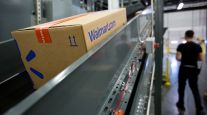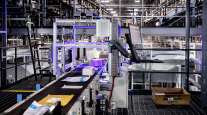Editorial: Industry Turns Gaze to Automation
Automated driving technology has been a consistently hot topic in the trucking industry over the past few years, but the glare of the spotlight was particularly bright last week at the Technology & Maintenance Council’s annual meeting and beyond.
Discussion at the TMC meeting in Atlanta examined many facets of the emergence of automated trucking, including competing pathways to deployment, the regulatory and legislative framework for this technology, its potential to enhance safety and productivity and a note of caution on vehicle cybersecurity.
To continue these discussions into the future, TMC said it is developing a new study group dedicated to automated vehicles, spinning the topic out of its Future Truck Committee.
“It’s here,” said TMC Executive Director Robert Braswell. “It’s time for it to come out of Future Truck and into the here and now.”
Meanwhile, in Arizona, Uber’s Advanced Technologies Group has been putting its self-driving trucks to work hauling freight on Interstate 40.
The technology developer is using these operations to build an early version of its near-term vision for autonomous trucks: freight transfer hubs where longhaul automated trucks and shorthaul conventional trucks swap trailers at drop yards.
This approach relies on drivers to handle the complexity of urban and suburban driving, while handing highway driving over to computers. Even so, Uber’s self-driving trucks still have a backup driver behind the wheel.
That wasn’t the case, though, for another company’s recent test.
Starsky Robotics announced one of its self-driving trucks traveled 7 miles on a closed-off road in rural Hendry County, Fla., with nobody on board.
But that doesn’t mean the truck was “driverless.” Starsky’s system moves the driver out of the cab and into an office, where he or she can monitor and in some cases even remotely control the truck from afar.
Which raises an important point: even the technology developers pushing the hardest to make autonomous trucks a reality continue to rely on skilled drivers as an essential part of their business models.
This is yet another indication that while the job of the driver very well may evolve as technology advances, those jobs aren’t likely to go away anytime soon.




